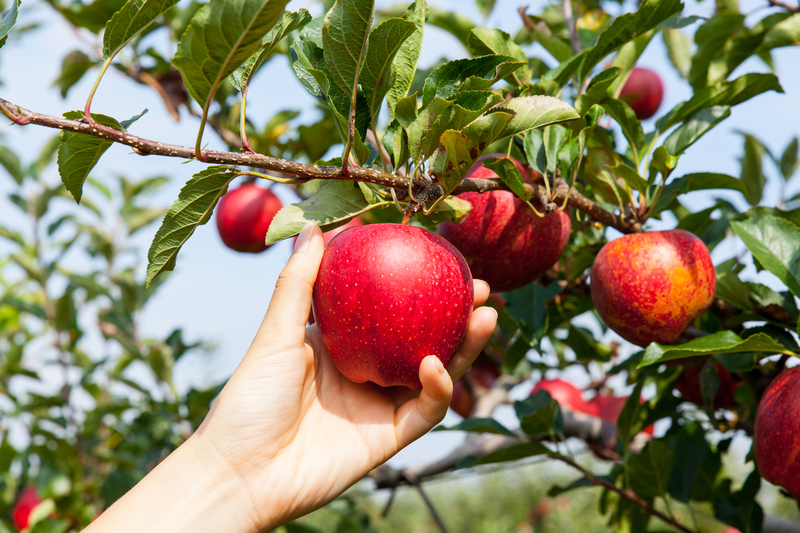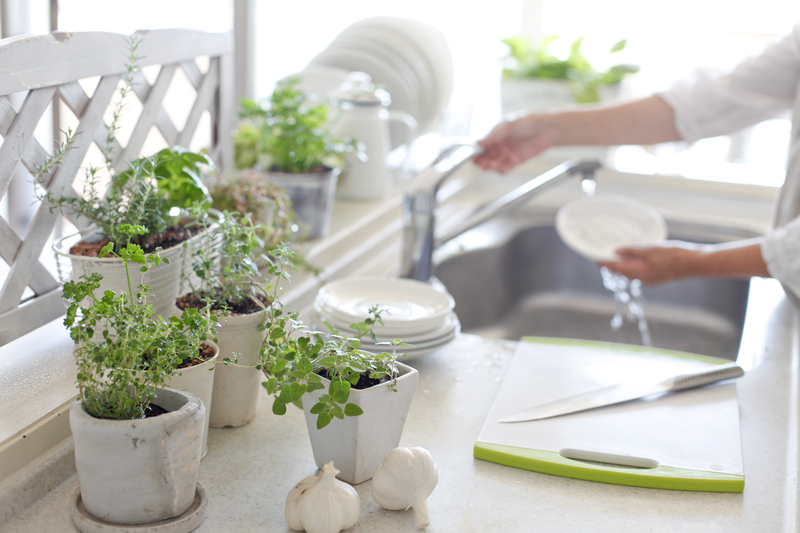Master the Craft of Designing Garden Seating Areas
Posted on 08/06/2025
Master the Craft of Designing Garden Seating Areas
Transforming your garden into a functional and visually pleasing outdoor space isn't just about lush plants and vibrant flowers--it's also about creating the perfect places to sit, relax, and enjoy the scenery. Designing garden seating areas is both an art and a science, requiring thoughtful planning, creativity, and a dash of personality. Whether you have a sprawling backyard or a cozy urban patio, mastering this craft will enhance your garden's appeal and usability. In this article, we'll guide you through the key strategies, inspiration, and practical tips to create stunning outdoor seating spaces that truly make your garden shine.
Why Focus on Garden Seating Area Design?
A well-designed seating area transforms your garden from a simple green space into a welcoming extension of your home. It's where you sip morning coffee, host summer soirees, or lose yourself in a good book. Beyond comfort, these garden seating spots help define your outdoor layout and invite you and guests to immerse in nature. Mastering the techniques of designing outdoor seating delivers both aesthetic and functional benefits:
- Creates inviting spaces for relaxation and socializing
- Provides structure and flow to your garden design
- Enhances the beauty and value of your property
- Allows for year-round use with weather-appropriate features

Step-by-Step Guide to Designing Stylish Garden Seating Areas
1. Assess Your Garden's Size and Layout
Before diving into furniture styles or plant choices, start by evaluating your garden's shape and scale. Take note of:
- Existing features (trees, patios, water elements)
- Sun exposure and shaded spots
- Natural focal points and privacy zones
- Available space for seating--think about flow and avoid overcrowding
The size and shape will determine whether you can feature a cozy nook for two, a large dining patio, or multiple seating zones for different uses.
2. Define the Purpose of Your Seating Area
Ask yourself: What do you want from your outdoor seating design? Are you aiming for:
- Entertaining guests - a spacious dining or lounging area
- Private retreat - a secluded bench or hammock among greenery
- Family gathering - flexible seating that accommodates everyone
- Productivity - a quiet outdoor workspace or reading nook
Clarifying your goals will guide every decision, from layout to furnishings to plant choices.
3. Choose the Right Location
Where you place your garden seating can make all the difference. Here's what to consider:
- Sun and Shade: Morning sun is pleasant for breakfast nooks, while afternoon shade is perfect for lazy reading spots.
- Views and Privacy: Position seats to maximize your best garden vistas and use screens, fences, or tall plants to shield from neighbors.
- Proximity to the House: For dining areas, ensure easy access to the kitchen. For peaceful hideaways, choose the most secluded corners.
Sketching a map of your space and potential seating locations can be extremely helpful.
Design Principles for Beautiful & Functional Garden Seating Spaces
1. Blend Form and Function
The best garden seating area designs strike a balance between usefulness and visual appeal. Consider these tips:
- Choose weather-resistant and comfortable furniture that complements your garden style--think classic wooden benches, contemporary modular sofas, or whimsical wrought iron sets.
- Plan for enough walking space around your seating without crowding plants or pathways.
- Mix and match seating options: Integrate benches, lounge chairs, hammocks, or even built-in stone walls for variety.
- Include tables, cushions, or footrests for added comfort and practicality.
2. Define Spaces with Structure
Use natural and architectural elements to shape your outdoor seating zones:
- Pergolas or Arbors: Create shade and a sense of enclosure.
- Hedges and Planters: Frame seating areas with lush borders for intimacy.
- Paving and Decking: Mark out seating spots with stone, gravel, tiles, or wood.
- Garden Walls or Screens: Enhance privacy and block wind or noise.
3. Integrate Nature into Your Design
Let your garden seating area harmonize with the landscape:
- Plant vines, climbers, or tall grasses for natural screening and beauty.
- Use flower beds, herb planters, or even edible gardens as living borders.
- Select fragrant plants (lavender, rosemary, jasmine) to add sensory delight to your seating space.
- Arrange furniture to face or frame remarkable planting combinations.
4. Play with Colors and Textures
Bring your personality into play with colorful cushions, throws, and striking materials:
- Choose outdoor fabrics resistant to fading and moisture.
- Mix rattan, wood, stone, or metal for engaging tactile variety.
- Let plant colors complement or contrast with seating for visual interest.
Popular Styles for Garden Seating Areas
1. Classic English Retreat
Picture a wooden bench shaded by an archway of roses, surrounded by box hedges and perennial borders. Add a stone path and vintage planters for timeless appeal.
2. Modern Minimalist Patio
Mix sleek lines, modular loungers, and geometric planters. Keep colors neutral and add pops of greenery for a calming contemporary outdoor vibe.
3. Mediterranean Courtyard
Combine terracotta tiles, wrought-iron chairs, and aromatic herbs like thyme and lavender. Add mosaic side tables and dappled shade with olive or citrus trees.
4. Boho Hideaway
Mingle hammocks, macrame swings, colorful floor cushions, and leafy canopies. Hang lanterns or fairy lights for magical evenings.
5. Rustic Woodland Nook
Repurpose tree stumps or logs as seats, nestle a simple bench under mature trees, and let the wildflowers set the scene.
Incorporating Lighting for Evening Enjoyment
Extend the life of your garden seating spaces with creative lighting:
- String lights over pergolas or between trees for ambience
- Solar-powered lanterns along pathways for safety and charm
- Soft uplighting beneath trees or behind seating for a dramatic glow
- Tabletop candles, lanterns, or battery LED lamps for intimate settings
Weather-Proofing Your Outdoor Seating Area
To ensure year-round enjoyment, plan for local weather conditions:
- Invest in quality weather-resistant furniture and cushions.
- Use umbrellas, retractable awnings, or pergola canopies for sun and rain protection.
- Consider fire pits, patio heaters, or cozy blankets for chilly evenings.
- Store cushions and accessories in waterproof boxes or sheds when not in use.
DIY Projects for Budget-Friendly Garden Seating
You don't need to break the bank to create inviting garden seating areas. Here are a few creative ideas:
- Build simple pallet sofas with outdoor cushions for a laid-back look.
- Stack concrete blocks and wooden planks into benches or side tables.
- Repurpose old chairs or thrifted furniture with new paint and weatherproof fabrics.
- Construct a circular bench around a favorite tree for a natural gathering spot.
Adding Finishing Touches: Accessories and Decor
No outdoor seating area is complete without personal touches. Consider:
- Scatter cushions and throws for even more comfort.
- Use outdoor rugs to define spaces and add color.
- Place decorative pots, sculptures, or wind chimes nearby.
- Keep handy a side table for drinks, books, or snacks.
Common Mistakes to Avoid
Even experienced gardeners can trip up when designing outdoor seating. Avoid these pitfalls:
- Cramming too much furniture into a small space--less is often more.
- Ignoring sun and shade--unbearable heat or total darkness can ruin a space.
- Choosing uncomfortable, impractical furniture that isn't suited to the outdoors.
- Neglecting pathways or accessibility--ensure smooth flow around your seating.
- Forgetting about storage for cushions or accessories during bad weather.

Frequently Asked Questions About Garden Seating Areas
1. What are the best materials for outdoor seating?
Teak, eucalyptus, cedar, powder-coated aluminum, synthetic rattan, and weather-resistant plastics are all excellent choices. Always select materials suitable for your climate and commit to regular maintenance for wood, metal, or fabric pieces.
2. How can I ensure privacy in my garden seating design?
Use natural screens like hedges, tall grasses, trellises with climbing plants, or install bamboo fencing or decorative panels. Strategic plantings work wonders for intimacy and tranquility.
3. What's the ideal size for a garden seating area?
For a cafe-style table and two chairs, allocate at least 1.5m x 1.5m. A family dining patio should offer at least 3m x 3m. Always allow walking room and don't push furniture right up against garden beds.
4. How do I keep my outdoor seating comfortable year-round?
Swap in waterproof, UV-resistant cushions for summer, and store them during heavy rains or winter. Use throws and outdoor blankets in spring and fall, and add heat sources like chimineas or fire pits for extra coziness on cool nights.
5. Is it worth hiring a garden designer?
If you're aiming for a complete transformation or have tricky slopes and layouts, consulting an expert can be worthwhile. However, many effective garden seating spaces are the result of informed DIY planning and incremental improvements.
Conclusion: Create Your Dream Garden Seating Retreat
Mastering the craft of designing garden seating areas is your ticket to an outdoor atmosphere that inspires relaxation, encourages connection, and magnifies the beauty of your plants and landscape. By analyzing your space, defining your needs, layering structure, nature, and style, and adding personalized touches, you'll create a garden seating design that feels uniquely yours.
Ready to start? Walk your garden, imagine the possibilities, and let these expert tips and ideas guide your way. With vision and a little effort, your ideal outdoor retreat awaits--just add a comfy chair and enjoy the view!

